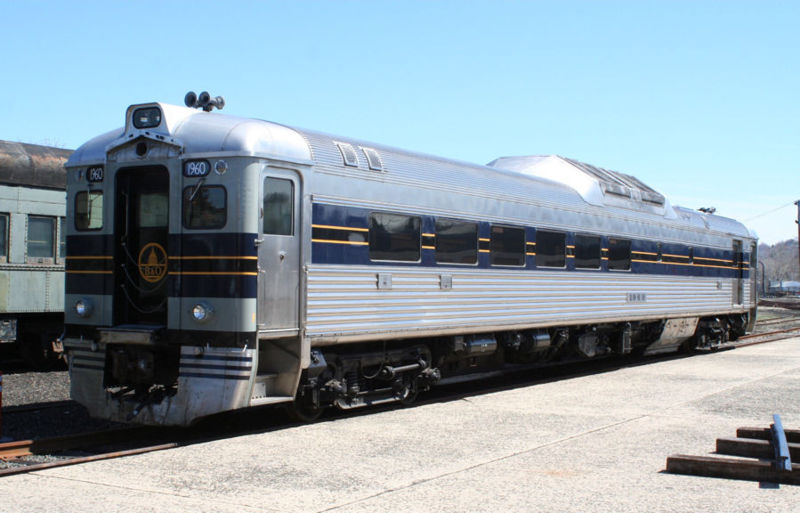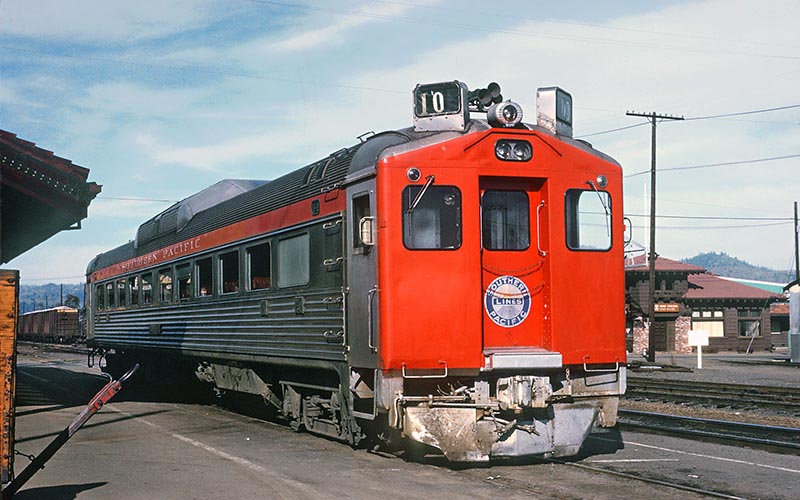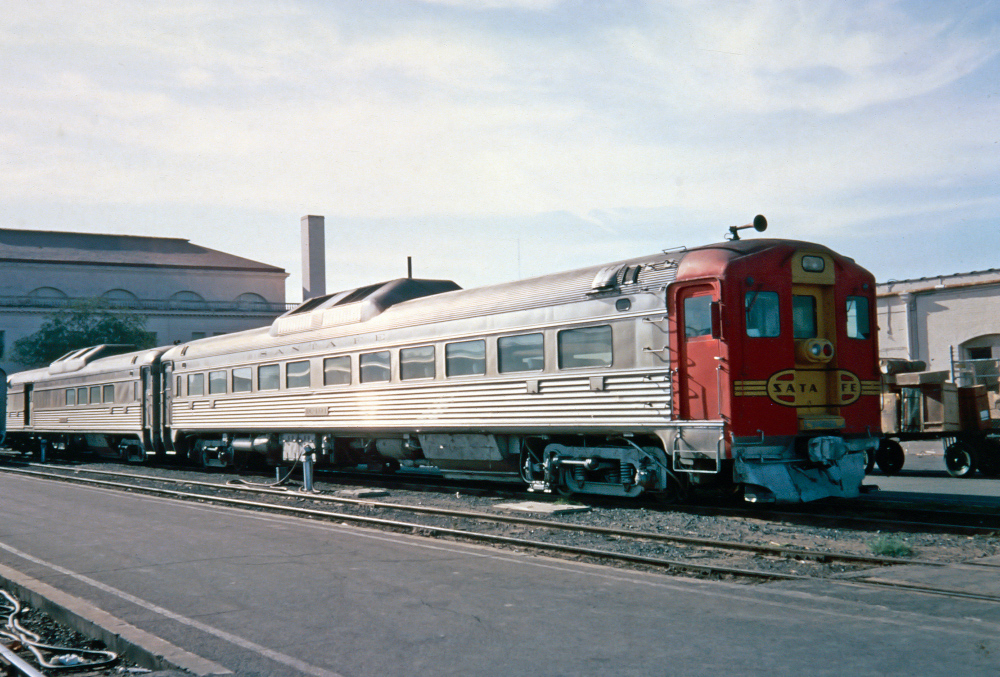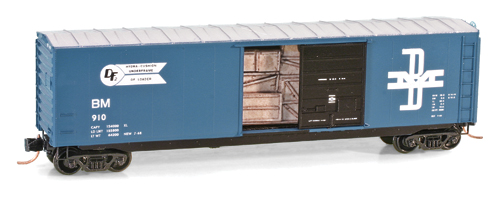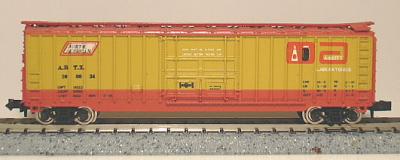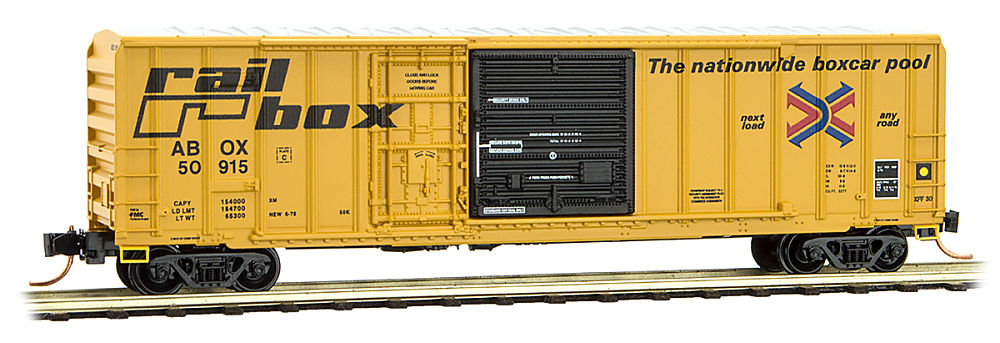History: This Single-car DMU is commonly known as the "RDC," the motorized Rail Diesel Car generally operated in rural areas where ridership and mail/parcel transport were too low for regular passenger train service. When first introduced, the RDC was also proclaimed to be the savior of branch line and suburban service. It was heavily used as a commuter service workhorse (and still is currently in some locations!).
The Budd Company rolled out the first RDC in the fall of 1949, a single RDC-1 "Budd Demonstrator." Hundreds more would eventually follow for service to railroads throughout North America and around the world (including South America, Australia, Saudi Arabia and even Cuba!). Oddly enough, it was Budd's experience in the production of small yet powerful diesel engines for WWII tanks that eventually lead to the birth of the RDC.
A total of 398 units were built. The RDC utilized two compact motors mounted under the car's floor to drive one axle on each truck. Capable of being operated by a motorman from either end of the car, these units could be used independently or combined to create a two- or three-unit consist. These railcars cold achieve as top speed of 85mph
A review of the Budd roster reveals that many RDC cars were operated well into the 1970's and early 1980's, with a small number still in service today!
Four standardized designs were created to reduce the time and expense of custom production
- RDC-1 was strictly passenger-oriented, containing 90 coach seats.
- RDC-2 contained 71 seats and a separate baggage area.
- RDC-3 combined a Railway Post Office with a baggage compartment and 49 seats.
- RDC-4 was a self-contained RPO-Express car.
Read more on Wikipedia.
The Budd Company rolled out the first RDC in the fall of 1949, a single RDC-1 "Budd Demonstrator." Hundreds more would eventually follow for service to railroads throughout North America and around the world (including South America, Australia, Saudi Arabia and even Cuba!). Oddly enough, it was Budd's experience in the production of small yet powerful diesel engines for WWII tanks that eventually lead to the birth of the RDC.
A total of 398 units were built. The RDC utilized two compact motors mounted under the car's floor to drive one axle on each truck. Capable of being operated by a motorman from either end of the car, these units could be used independently or combined to create a two- or three-unit consist. These railcars cold achieve as top speed of 85mph
A review of the Budd roster reveals that many RDC cars were operated well into the 1970's and early 1980's, with a small number still in service today!
Four standardized designs were created to reduce the time and expense of custom production
- RDC-1 was strictly passenger-oriented, containing 90 coach seats.
- RDC-2 contained 71 seats and a separate baggage area.
- RDC-3 combined a Railway Post Office with a baggage compartment and 49 seats.
- RDC-4 was a self-contained RPO-Express car.
Read more on Wikipedia.
Railroad/Company: The Budd Company was a 20th-century metal fabricator, a major supplier of body components to the automobile industry and a manufacturer of stainless steel passenger rail cars, airframes, missile and space vehicles, various defense products.
Budd was founded in 1912 in Philadelphia by Edward G. Budd, whose fame came from his development of the first all-steel automobile bodies in 1913 and, in the 1930s, his company's invention of the "shotweld" technique for joining pieces of stainless steel without damaging its anti-corrosion properties.
Budd Company became part of Budd Thyssen in 1978 and in 1999 a part of ThyssenKrupp Budd. Body and chassis operations were sold to Martinrea International in 2006. No longer an operating company, Budd filed for bankruptcy in 2014. It currently exists to provide benefits to its retirees.
Read more on Wikipedia.
Budd was founded in 1912 in Philadelphia by Edward G. Budd, whose fame came from his development of the first all-steel automobile bodies in 1913 and, in the 1930s, his company's invention of the "shotweld" technique for joining pieces of stainless steel without damaging its anti-corrosion properties.
Budd Company became part of Budd Thyssen in 1978 and in 1999 a part of ThyssenKrupp Budd. Body and chassis operations were sold to Martinrea International in 2006. No longer an operating company, Budd filed for bankruptcy in 2014. It currently exists to provide benefits to its retirees.
Read more on Wikipedia.
Item Links: We found: 1 different collections associated with Rail - Railcar - Budd RDC
- Collection N Scale Model Trains: 156 different items.
Item created by: gdm on 2018-05-26 18:46:01. Last edited by George on 2024-01-14 10:47:37
If you see errors or missing data in this entry, please feel free to log in and edit it. Anyone with a Gmail account can log in instantly.
If you see errors or missing data in this entry, please feel free to log in and edit it. Anyone with a Gmail account can log in instantly.


